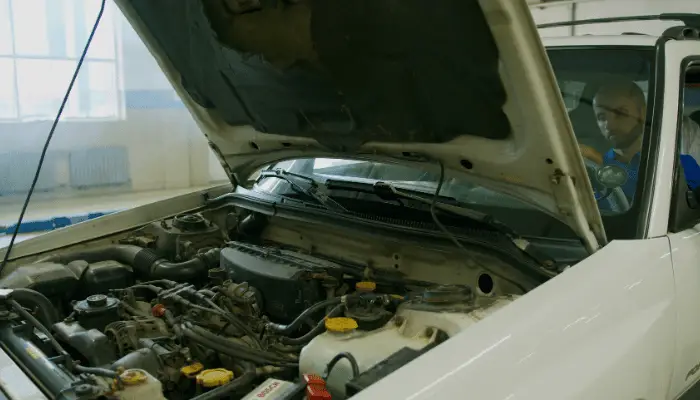Last Updated on July 5, 2023 by Chase Manhattan
The purge valve, acting as an essential component of your vehicle’s Evaporative Emissions Control System (EVAP), plays a vital role in reducing harmful emissions and maintaining fuel efficiency. The EVAP system is designed to prevent fuel vapors from escaping into the atmosphere by capturing and temporarily storing them in a charcoal canister. The purge valve, also known as the canister purge valve, controls the release of these vapors into the engine to be burned during combustion. In this comprehensive guide, we will discuss the importance and functioning of a purge valve, its location, and various related issues.
- How to Clean Car Carpets Quick and Easy - July 10, 2024
- Can You Touch Up Clear Coat? Yes and No (Here’s Why) - November 25, 2023
- How To Wax A Car By Hand: A Comprehensive Guide - November 14, 2023
Quick Navigation
What’s The Purpose of A Purge Valve?
The primary purpose of a purge valve is to regulate the flow of fuel vapors from the charcoal canister to the engine. By doing this, the purge valve helps in reducing harmful emissions and optimizing engine performance. It also plays a significant role in improving fuel economy by ensuring that unburned fuel vapors are utilized efficiently within the engine.
Where Is The Purge Valve Located?
The purge valve is typically located on or near the engine intake manifold. Its exact position may vary depending on the make and model of the vehicle. To help you locate the purge valve in your car, it is advisable to consult your vehicle’s owner manual or seek assistance from a qualified mechanic.
How Does The Purge Valve Work?
The purge valve is an electrically-operated solenoid controlled by the engine computer. When the engine is off, the purge valve remains closed, preventing the flow of fuel vapors. Once the engine starts and reaches its optimal operating temperature, the engine computer sends a signal to the purge valve, causing it to open. This allows a controlled amount of fuel vapors to flow from the charcoal canister into the engine intake manifold. The vapors are then burned during the combustion process, reducing overall emissions and enhancing fuel efficiency.
What Happens If A Purge Valve Goes Bad?
A malfunctioning purge valve can cause a wide range of issues while driving, including poor fuel economy, reduced engine performance, and increased emissions. Some of the common symptoms of a failing purge valve are:
- Check Engine Light: The vehicle’s computer monitors the purge valve’s performance. If it detects abnormal purge flow, it triggers the check engine light and stores relevant error codes (e.g., P0441 or P0446).
- Decreased Gas Mileage: A malfunctioning purge valve can lead to a reduction in fuel efficiency, as the unburned fuel vapors are vented into the atmosphere instead of being utilized in the combustion process.
- Engine Problems: If the purge valve is stuck open, it can cause a vacuum leak, leading to an imbalanced air-fuel mixture. This can result in rough idling, difficult starts, and overall poor engine performance.
Can You Delete or Bypass A Purge Valve?
Bypassing or deleting a purge valve is not recommended, as it can lead to increased emissions, reduced fuel efficiency, and potential engine damage. Moreover, it can cause your vehicle to fail an emissions test, which may result in fines or other penalties.
Introduction of Purge Valves in Motor Design
The introduction of purge valves in motor design can be attributed to the increasing awareness and stringent regulations surrounding vehicle emissions. By incorporating a purge valve into the EVAP system, automakers have been able to significantly reduce the release of harmful fuel vapors into the environment, while also improving fuel efficiency and engine performance.
Emissions Restrictions
Emissions restrictions have played a crucial role in shaping the design and functioning of purge valves. Governments worldwide have imposed strict emission standards to minimize the impact of vehicular emissions on air quality and public health. As a result, automakers have been compelled to develop and implement advanced emission control technologies, including the purge valve, to ensure compliance with these regulations.
Can You Pass An Emissions Test Without A Purge Valve?
It is highly unlikely that a vehicle without a purge valve or with a malfunctioning purge valve will pass an emissions test. The purge valve is an essential component of the EVAP system, which is responsible for controlling fuel vapor emissions. A faulty or missing purge valve can result in excessive emissions, causing the vehicle to fail an emissions test.
What About A Malfunctioning Purge Valve?
If your vehicle has a malfunctioning purge valve, it is crucial to have it repaired or replaced as soon as possible. Continuing to drive with a faulty purge valve can lead to increased emissions, poor fuel economy, and potential engine damage. Moreover, it can cause your vehicle to fail an emissions test, resulting in fines or other penalties.
Can You Clean A Purge Valve?
Cleaning a purge valve may help in resolving minor issues, such as clogs or dirt buildup. However, if the valve is cracked or damaged, cleaning may not be sufficient, and a replacement would be necessary. It is advisable to seek the assistance of a qualified mechanic to evaluate the condition of the purge valve and determine whether cleaning or replacement is the most appropriate course of action.


